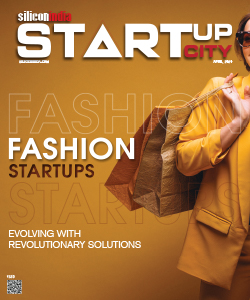What Is My ROI? The CMO's Digital Dilemma
SapientNitro, is part of Sapient, is an integrated marketing and technology services firm. It creates and engineers highly relevant experiences that accelerate business growth and fuel brand advocacy for its clients. By combining multi-channel marketing, multi-channel commerce, and the technology that binds them, it influences customer behavior across the spectrum of content, communication and commerce channels, resulting in deeper, more meaningful relationships between customers and brands.
The truth has long dawned upon us. Technology has spurred an explosion of digital channels that have completely disrupted the way organizations interact with their customers. This digital trend that began in the west, has rapidly reached the shores of developing nations. Be it with the thought "Digital is the new future, we want to explore the enormous opportunity that lies within" or "Our competition and everyone else is going digital, so we better not slack", a vast majority of corporations have already laid their stake in the digital ground in one capacity or the other. Corporate web sites (with/without e-commerce), social communities (Facebook, Twitter, YouTube), email marketing, display advertising, search engine marketing, affiliate marketing are a few examples of such digital endeavors. Even though some of these channels are previously unchartered territories (especially in the Indian sub-continent) smart CMO's have realized that one size does not need to fit all - remember TV ads. Properly distilled, these channels have a huge upsell potential either in terms of revenues or brand value. There is no such thing as a free lunch and investments in digital marketing can/will be significant and ongoing. Which marketing campaign is working and which is not? Is my newly appointed Search Director delivering his salary's worth? What is the buzz around my brand? How do I distribute my marketing budget amongst various channels? These and many more such questions together summarize the dilemma of a CMO in the digital world. The purpose of this article is to purely slice the tip of this iceberg and offer five effective tips to equip digital decision makers with the right ingredients to measure and optimize the ROI on their digital spend.
Tip 1 - A Robust Analytics Enablement Framework.
What exactly does this mean? As far as measurement is concerned, "What you implement is what you get". Simple enough, no magic. This means that all your digital assets need to be properly tagged so that data that is collected downstream can be relevantly categorized to provide meaningful information. Consider the following two examples: * As far as your web sites are concerned, every single page needs to have the relevant standard tracking code in place so that visitor behavior can be analyzed. *As far as campaigns are concerned, the campaign codes that you use to draw people to your web site will need to follow an intuitive naming convention. An automated campaign code generator is highly recommended. As simple as this thought sounds, few sites can claim this accomplishment. As a CMO, this is where your strong partnerships with the creative and technology heads will come into play. Together, you will need to trickle down a strong message to their teams that a digital asset (a web site, a web page) that does not have the proper tracking infrastructure in place will simply not go live. This validation will inevitably need to be baked into your company's IT deployment process. This hard stance will ensure that you have the basic foundation in place to collect the data required to measure the ROI on your digital assets.
Tip 2 - On-time delivery of tailored insights
Once you start collecting data from all sources, this will be appropriately massaged by the analytics tool(s) that you have implemented and made available to your analytics team. It is now their job to provide customized views of the data to the relevant decision makers as per the agreed upon schedule. This is critical. Insights come in two flavors, both of which are equally important.
Tactical * If a particular set of search phrases that you are spending a lot of money on, are not getting their money's worth, a customized "Paid Search Performance Dashboard" is supposed to tell you just this, so that you can take corrective actions and spend that money elsewhere. * A "Campaign Analysis Report" for a display ad or an email promotion you are running should accurately depict your forecasted versus actual ROI.
Strategic
* A "Competitive intelligence Dashboard" is required to show you where you stand with regards to your competition.
* A "Social Sentiment Report" will provide feedback based on how customers are reacting to your brand's presence and proposition.
* "Attribution" and "Media-mix" modeling are two statistically proven techniques that will be used by your analysts to help you set the right weightage per channel in terms of ROI recognition. CMOs can use this to objectively plan future budget assignments.
The above are a few examples only. Actionable insights and recommendations are vital to taking data-backed decisions to optimize spend and increase ROI. Invest in a top-notch team of analysts (either internal hires or qualified agencies) whose purpose in life will be to just give you those insights so that you don't need to act solely on intuition.
Tip 3 - Try them All
As a digital marketer, you need to have a large appetite for risk. You will need to try all channels of customer outreach. Some are necessary, some will work when tweaked to optimize and some will simply not work. What works for one company may not work for you. The only way you will find out what works "for you" is through experimentation. Take an example of display advertising. Within the shortest span of time, if you want to attract the maximum pair of eye balls to your web site for that super-special promotion you are running, this is by far the easiest route. It is equally important to note that this is a very expensive medium of marketing. You can quickly exhaust your budgets and your ROI's will rapidly diminish if you don't figure the right logistics in launching your display ad campaign. Your action item here is to try, collect relevant performance metrics (this is the job of your analytics team) from past campaigns and use them to wisely plan your next campaign.
Tip 4 - Test + Learn + Adapt
Consider this real-world scenario. You have concluded a battery of usability tests on your web site and used those guidelines to design and launch a completely revamped web site that is supposed to be the most "customer-friendly". Did that truly turn out to be the case? How would you know? This is where you put the professionals aside and let your customers tell you what works best for them. What has started off as "A/B Testing" has now evolved into the concept of "Multi-Variate Testing". Technology and tools are very much there to make this happen. Pick your top landing pages (and other vital pages on your site) and have your creative/technology teams implement various flavors of it. The flavors can be in the form of data presentation - Call to Action buttons, how menus/links are presented, or the actual page content itself. Once in place:
- The first step is to selectively target different groups of customers with various flavors- Test.
- The second step is to objectively evaluate which flavor(s) are resulting in the maximum yields (based on the goals of your site) - Learn.
- Finally, shoot the losers, promote the winners - Adapt.
This is probably one of the best examples of "Data-Based Decision Making". Your action here is to fund/endorse this culture and ensure that it is a continuous process. This will work wonders for you.
Tip 5 - Convert your customer into your Brand's Ambassador
This is my last yet most powerful tip. Look at the below graphic Every Organization/brand obviously needs to attract potential customers and get them to engage with their site and evaluate their product. A positive impression at this point usually leads to a purchase. The next logical step is to make customers loyal to your brand by making them repeat customers. The buck however, should not stop even here. Organizations need to take this a step further - recruit customers as their brand advocates. How do you do this? You do this by truly "caring" for your customers. Do not try to "fake" it.
- Listen to the voice of your customers
- on social channels and through site surveys.
- Collect the data, understand the pain points and draw up action plans.
- Commit the resources (money and manpower) to address genuine grievances and prove to your customers that you care.
Mistakes can and will happen on your part. A warm and personalized measure of corrective action can convert an "ardent hater" to an "ardent lover". A positive impact of this transformation can and will go viral. Think "Pyramid Effect". Conclusion As stated earlier, this is my attempt to slice the tip of the iceberg only. There will be challenges and complications that are bound to detract you. With a firm resolve to embrace uncertainty and to do the right thing for your company, CMO's and other digital decision makers will definitely benefit by incubating these 5 tips into their digital modus-operandi. The article is authored by Vinay Mantha, Director, Marketing Strategy & Analytics-SapientNitro (India)

.jpg)

